Culloden - the place of the battle that Bonnie Prince Charlie, a champion of the Jacobite Cause, lost to some 9000 English troops, led by the Duke of Cumberland. 1746.
The Jacobite rebels were crushed by King George II's troops.
This was the last battle fought on British soil, and dashing Scotland's hopes of independence. See http://www.electricscotland.com/history/culloden/index. It is also known as "Bloody Culloden." See www.highlanderweb.co.uk/bloody/culloden/home. From here, the Bonnie Prince fled to Skye.
 Culloden Battlefield, Scotland
Culloden Battlefield, Scotland
The battlefield is comprised of pathways and stone markers. Here is where Clan Campbell fought.
There is a fine, winding, narrow, woodsy memorial pathway through the battlefield, with worn headstone identifications where the clans had fought. We spent a fine morning looking up old family names. Relatives or not, the hunt was on for every McClure or McConaghey, Mac or Mc, and all the related clan septs, including (f0r us, we think) Campbell, MacLeod, Black, MacGregor. Most Scots have the Mac spelling, but some have the Mc, and the earliest Irish were known as "Scotties," so the names are back and forth. Read about "Remnants of the Roman Empire in Britain," at http://www.fsmitha.com/h1/ch26. - scroll down to the section entitled, "Independence and a Celtic Revival in Britain." That addresses the early Scotties.
A site to track the clan septs, or subdivisions - see http://www.electricscotland.com/webclans/septs.
By way of update to 2013 now, Scottish Life magazine Spring 2013 reports that there will soon be a new Culloden Battlefield Trail, 5 miles long, a circle network of paths. It will be easier to range around Balloch and Culloden Woods to the moor where 1500-2000 clansmen were killed.
Add stations telling history and tales, along with poetry by one Aonghas MacNeacail, from Skye.
The Jacobite rebels were crushed by King George II's troops.
This was the last battle fought on British soil, and dashing Scotland's hopes of independence. See http://www.electricscotland.com/history/culloden/index. It is also known as "Bloody Culloden." See www.highlanderweb.co.uk/bloody/culloden/home. From here, the Bonnie Prince fled to Skye.
 Culloden Battlefield, Scotland
Culloden Battlefield, ScotlandThe battlefield is comprised of pathways and stone markers. Here is where Clan Campbell fought.
There is a fine, winding, narrow, woodsy memorial pathway through the battlefield, with worn headstone identifications where the clans had fought. We spent a fine morning looking up old family names. Relatives or not, the hunt was on for every McClure or McConaghey, Mac or Mc, and all the related clan septs, including (f0r us, we think) Campbell, MacLeod, Black, MacGregor. Most Scots have the Mac spelling, but some have the Mc, and the earliest Irish were known as "Scotties," so the names are back and forth. Read about "Remnants of the Roman Empire in Britain," at http://www.fsmitha.com/h1/ch26. - scroll down to the section entitled, "Independence and a Celtic Revival in Britain." That addresses the early Scotties.
A site to track the clan septs, or subdivisions - see http://www.electricscotland.com/webclans/septs.
By way of update to 2013 now, Scottish Life magazine Spring 2013 reports that there will soon be a new Culloden Battlefield Trail, 5 miles long, a circle network of paths. It will be easier to range around Balloch and Culloden Woods to the moor where 1500-2000 clansmen were killed.
Add stations telling history and tales, along with poetry by one Aonghas MacNeacail, from Skye.
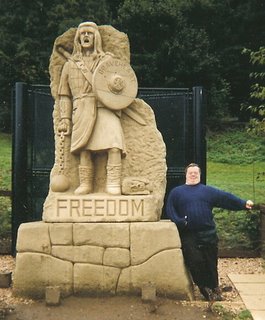
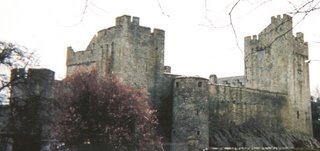 Skye, Dunvegan Castle, Scotland
Skye, Dunvegan Castle, Scotland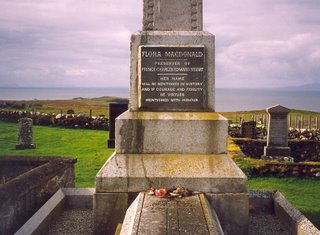 Skye, Grave of Flora MacDonald who helped Bonnie Prince Charlie escape after his defeat at Culloden, 1746
Skye, Grave of Flora MacDonald who helped Bonnie Prince Charlie escape after his defeat at Culloden, 1746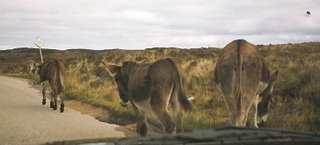 Tongue, Scotland, highland wild donkeys
Tongue, Scotland, highland wild donkeys Blair Castle, Atholl, near Pitlochry, Scotland
Blair Castle, Atholl, near Pitlochry, Scotland Sheep, herding, Scotland
Sheep, herding, Scotland Scots tower house, Highlands, Scotland
Scots tower house, Highlands, Scotland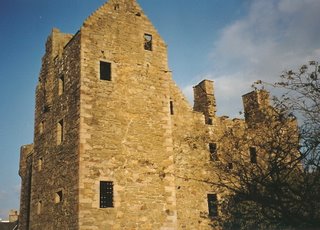 Tower House, Scotland, near Inverness (as I recall)
Tower House, Scotland, near Inverness (as I recall) Norman Tower House, Ireland (between Rosslare and Waterford)
Norman Tower House, Ireland (between Rosslare and Waterford)